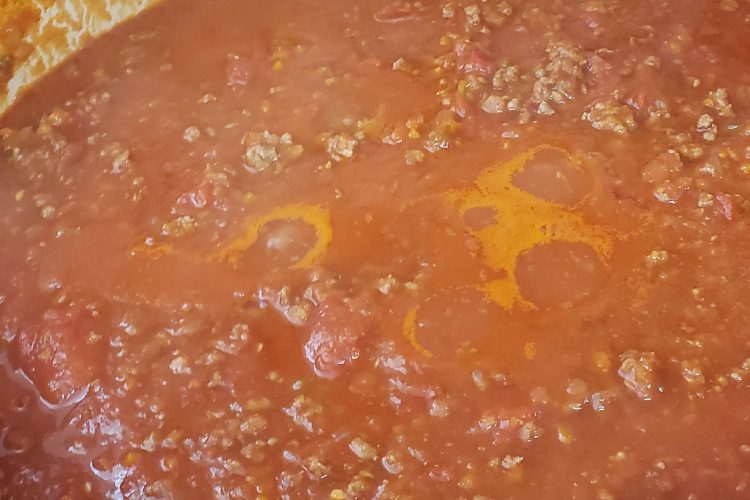I learned to make this recipe from my friend, Carol, a professional chef married to an Italian national. She used this sauce in a lasagna she brought to a pot luck. It was the best tasting lasagna I have ever had. All other recipes pale in comparison.
The sauce is made of simple ingredients and cooked over low heat for a few hours. It is well worth the time and effort as you can make a huge amount and divide it into portion sizes and freeze it.
The nice thing about bolognese is that it can be used in a myriad of ways. Use it
- As a pizza topping;
- With other types of pasta;
- As a topping for baked potato;
- A base for pot pie;
- A pasta casserole;
- Over hot dogs; and,
- Over toasted bread.
Hands-on time: 40 minutes
Cook time: 3-4 hours
Yield: 6 quarts sauce
INGREDIENTS
- 2 pounds ground beef, chuck, or other well-marbled meat from the shoulder/neck/upper thigh that requires slow cooking over a long period
- 2 pieces of oxtail (optional)
- olive oil for cooking – to lightly coat the bottom of the pan
- 4 stalks celery
- 3 large carrots
- 4-5 large onions
- 28 ounce can Italian peeled tomatoes
- 28 ounce can tomato puree
- 6 ounce can tomato paste
- 1 cup white wine
- 1/4 cup of whole milk
- 1-2 bay leaves
- 3-5 large, fresh tomatoes, any kind
- 1-2 tablespoons of Fish sauce or minced anchovies or anchovy paste for umami flavor (optional)
- salt and pepper to taste
INSTRUCTIONS

cubed carrots for processing 
3-4 stalks only of celery 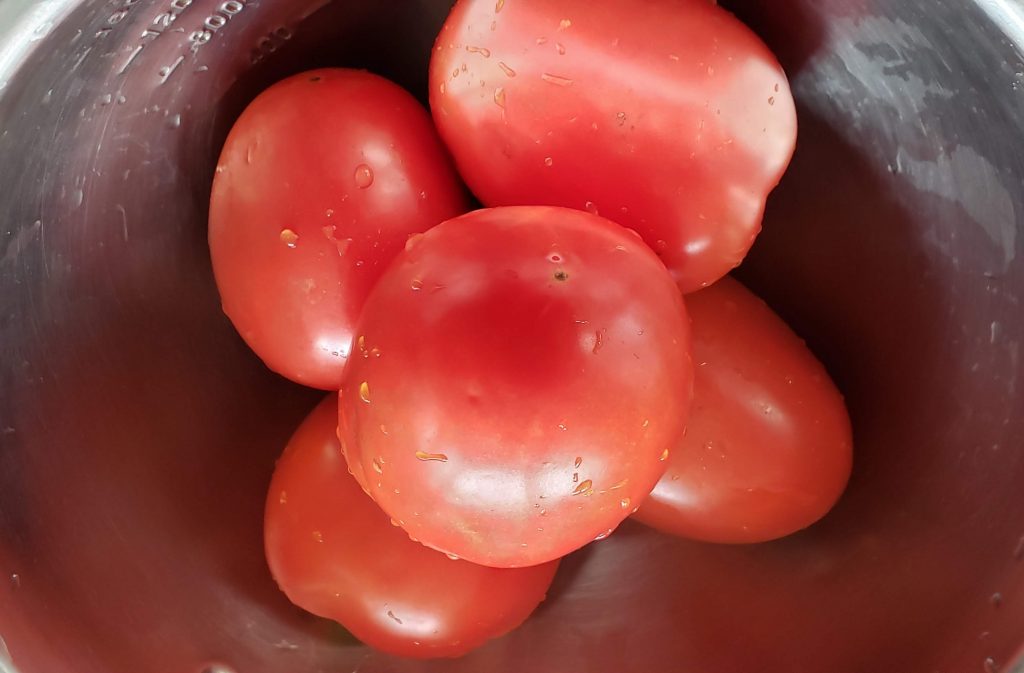
fresh tomatoes used 
tomato products used 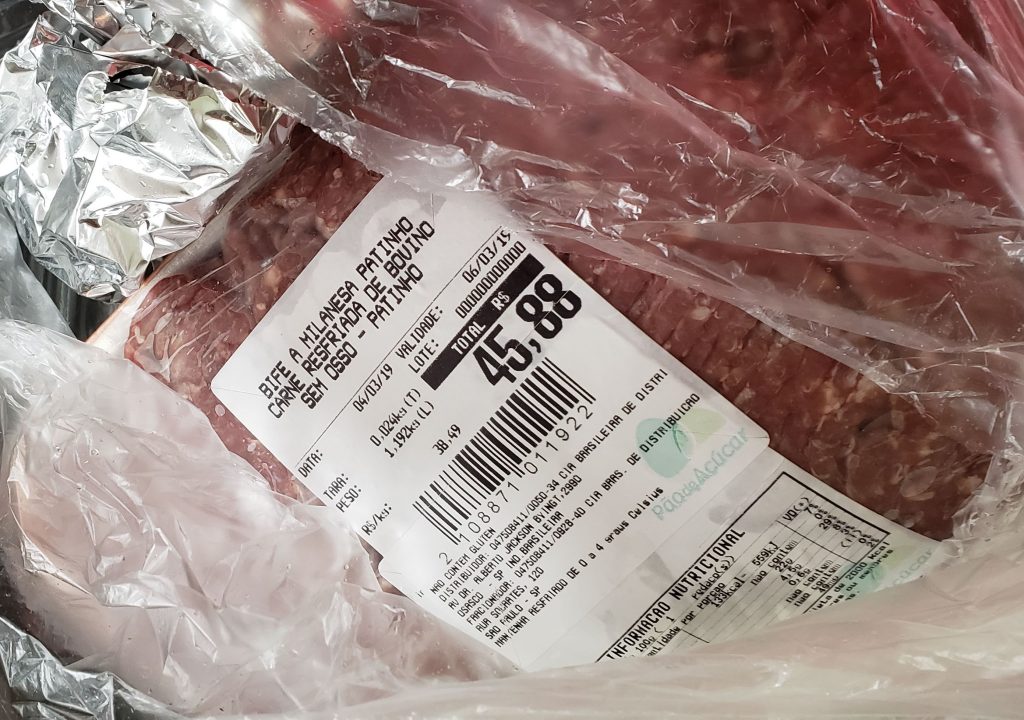

1.Use the rule of thumb of 1 large onion to every 1/2 pound of meat. Peel and coarsely chop the onions and place in a food processor. Pulse a few times, scraping down the sides until minced, but not pureed.
2. Place an 8-quart pan over high heat and wait for a couple of minutes to ensure the pan is hot before adding enough olive oil to lightly coat the bottom.
3. Add the minced onion and let them soften and turn clear.
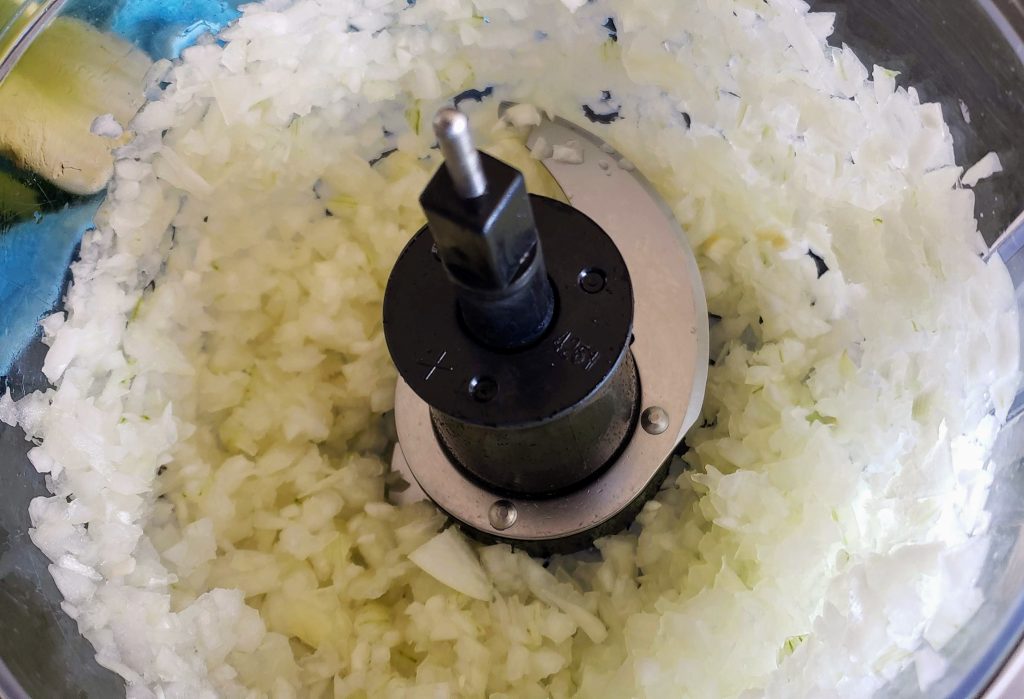
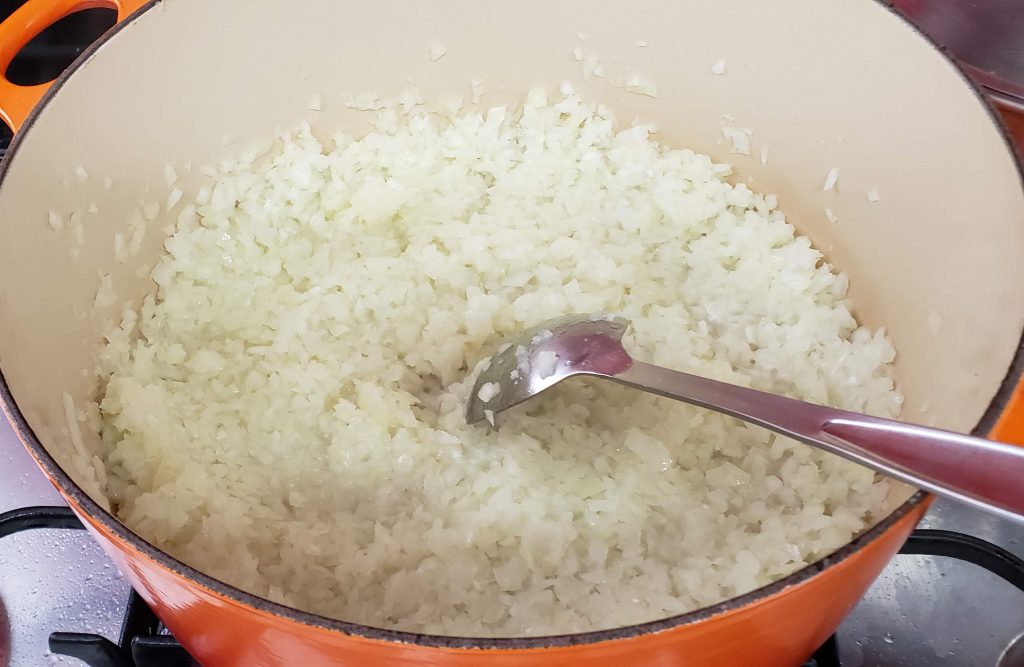
4-5 large onions minced and softened. Use 1 onion for every 1/2 pound of meat
4. Add the ground beef and oxtail to the hot pan to brown. Add the bay leaf. Ensure the water from the meat has completely dried when browning.
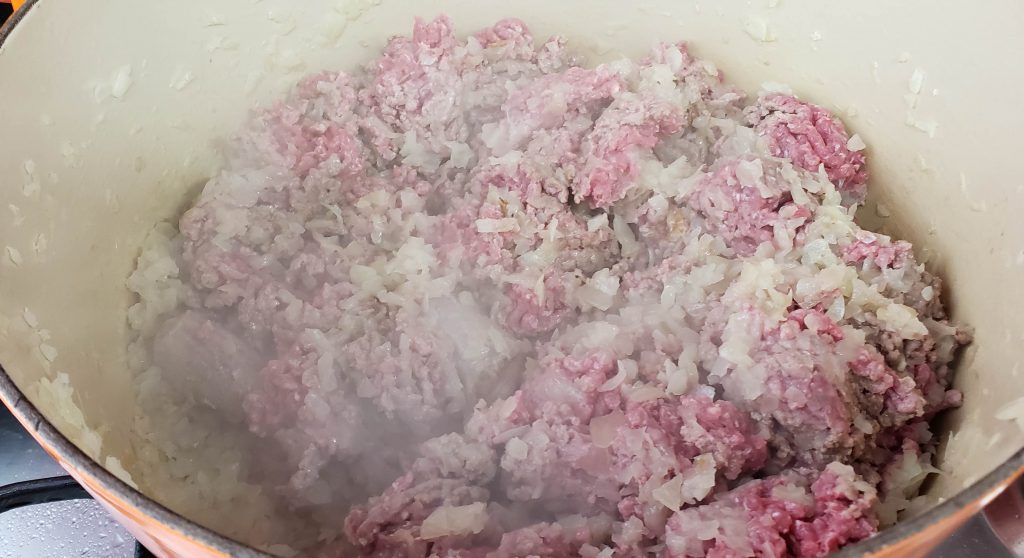
beginning browning meat and onions 
browning meat and onions with 2 oxtail bones 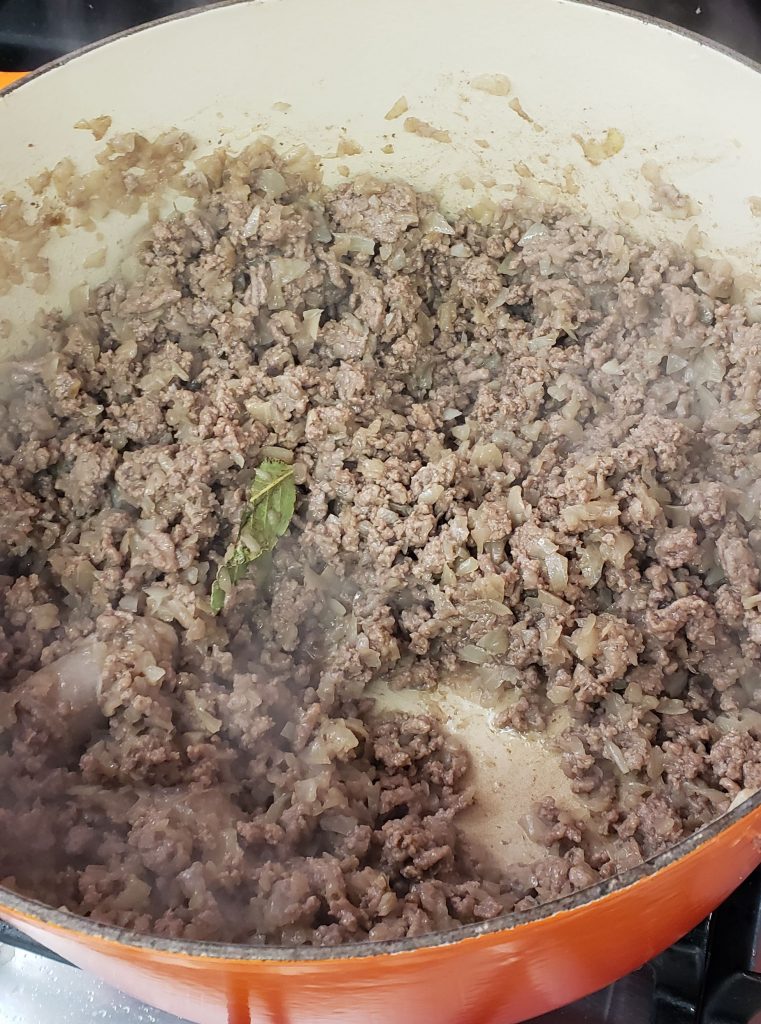
ensuring water has dried when browning ground meat
5. Meanwhile, wash the carrots and celery well, remove the bottoms and tops of both vegetables, and coarsely chop them. Add them to the food processor (you don’t need to clean the processor in-between) and mince. The volume of the minced carrots and celery should be equal to that of the minced onion.
6. Add the minced vegetables to the browned beef and onions.
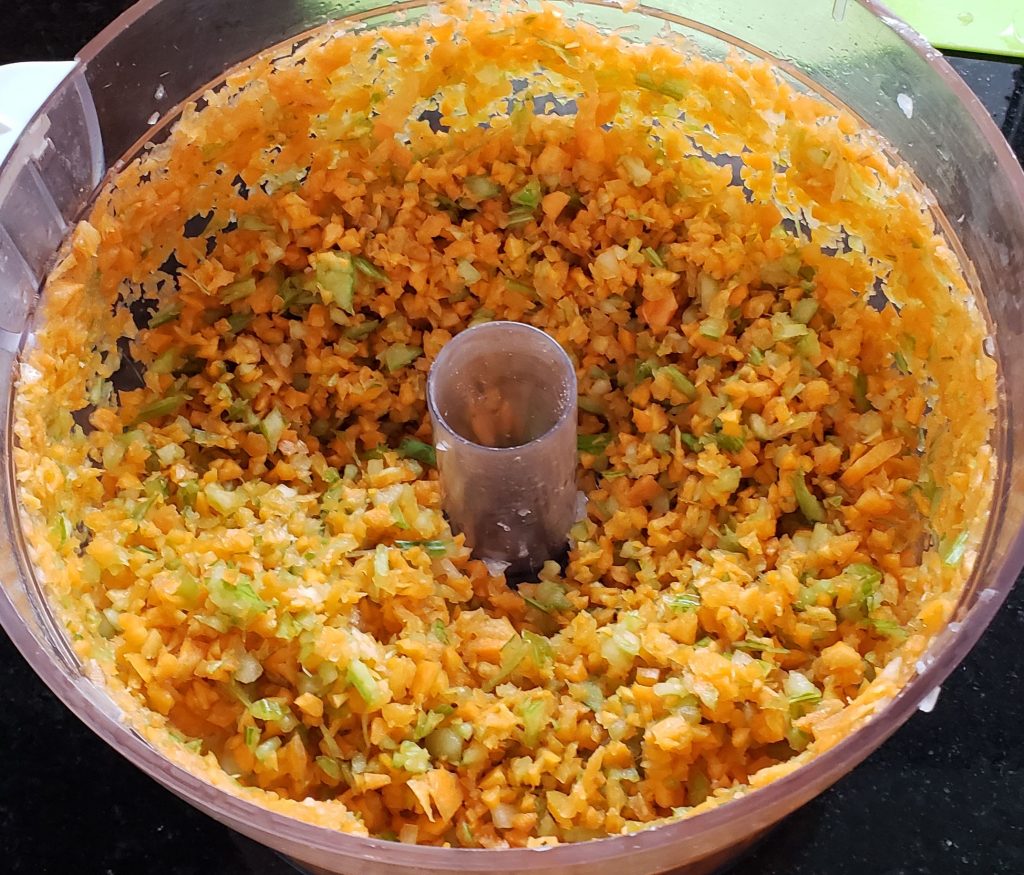
minced celery and carrots 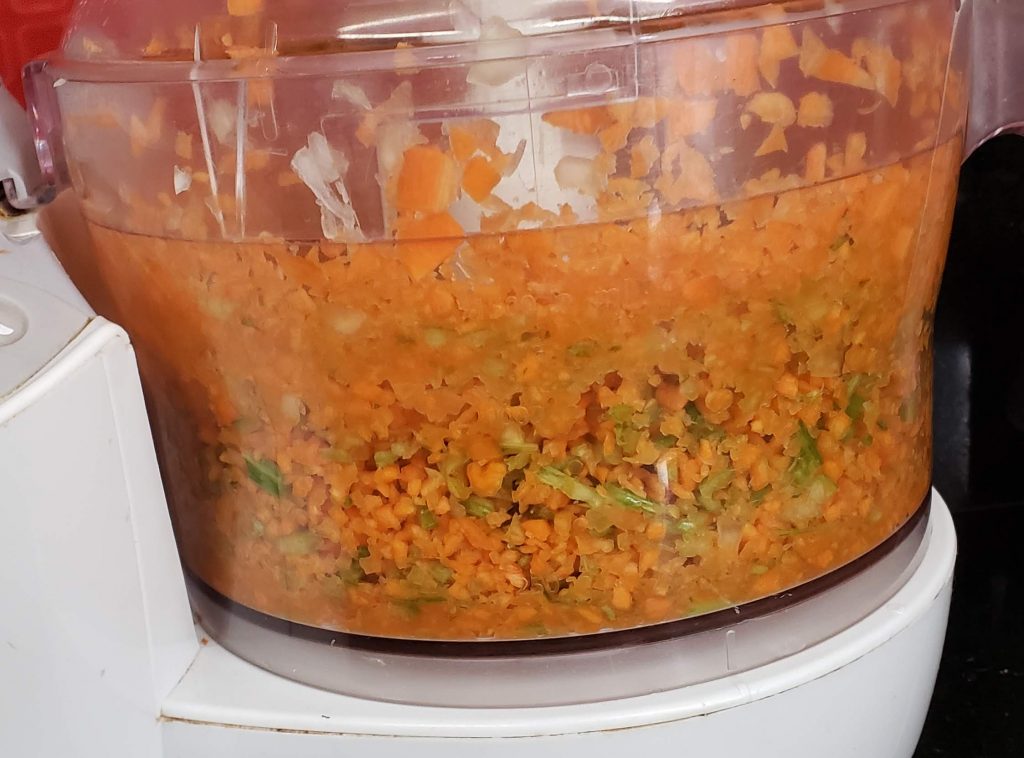
volume of celery and carrot 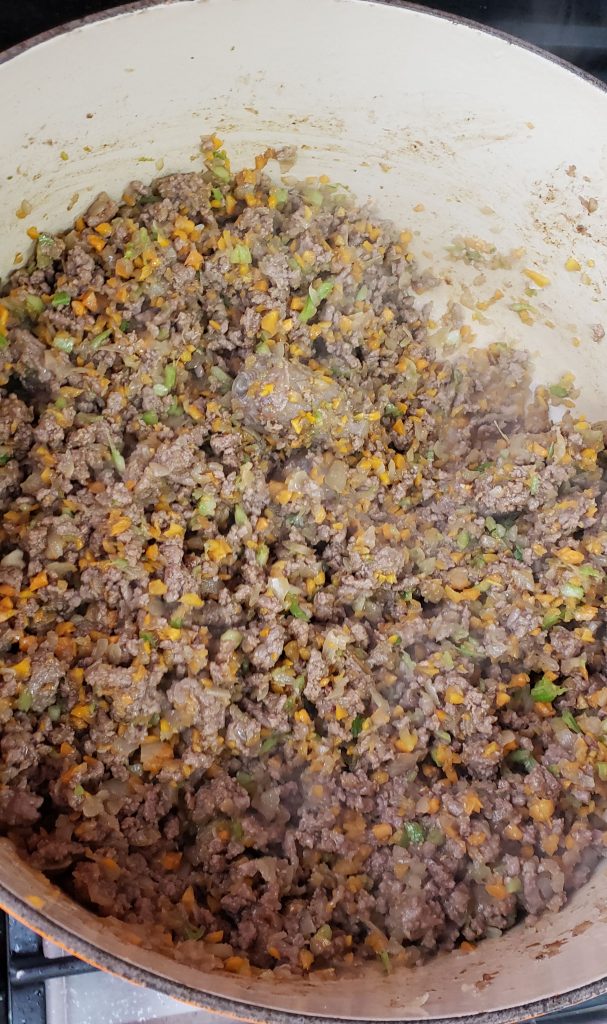
7. Add tomato paste to the pan and let it cook until it darkens and dries a bit. It will change color from bright red to red-brown.
8. Wash, then chop the fresh tomatoes and add them to the food processor. Also add the can of whole, peeled tomatoes, and pulse to liquefy. Add this mixture to the pot.
9. Add the canned, or bottled tomato puree to the pot and give the pot a good stir to ensure that nothing is sticking to the bottom.
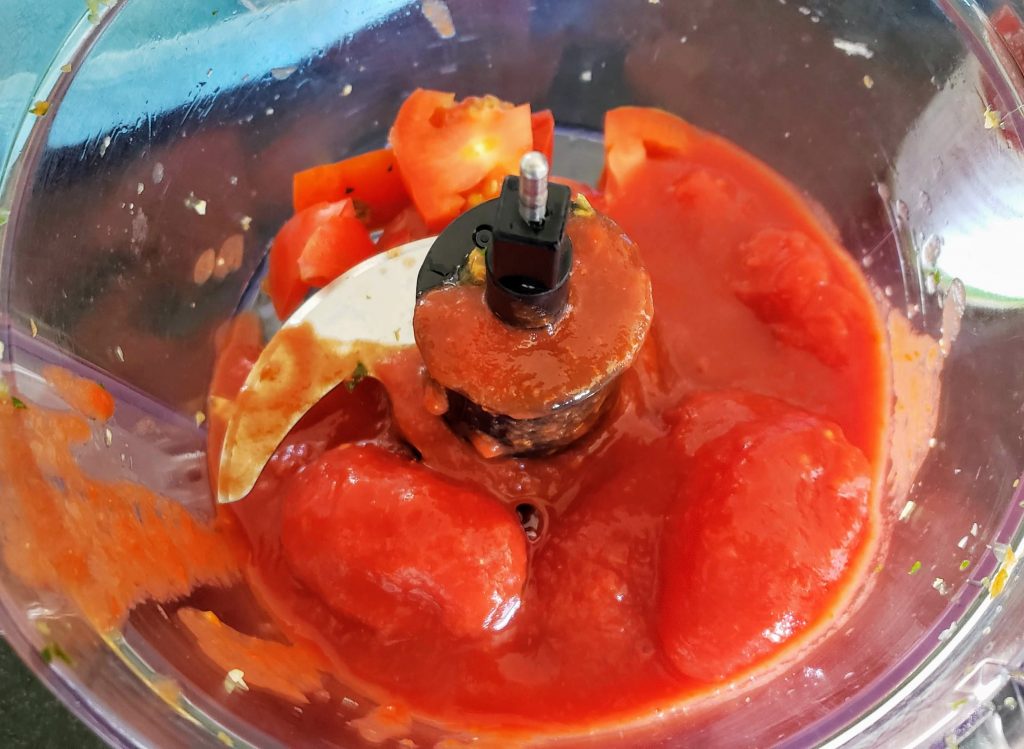

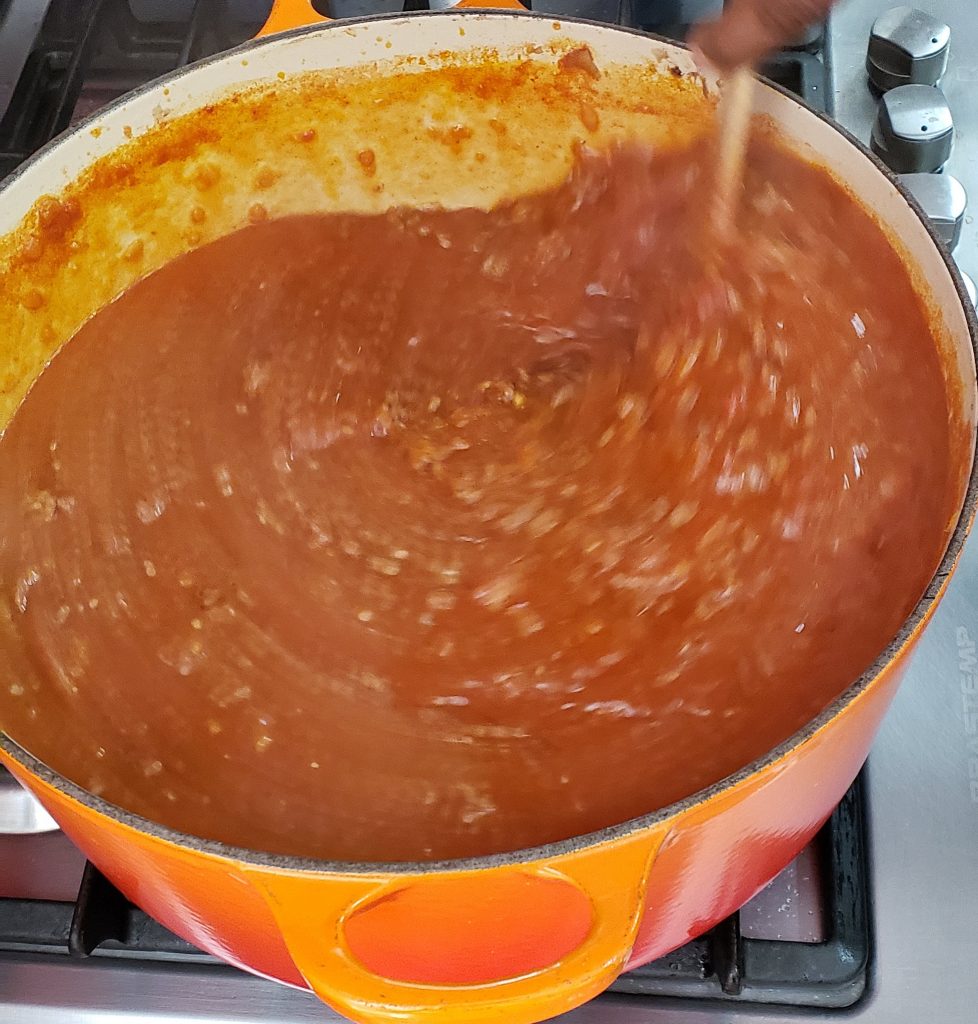
Stir sauce to prevent sticking
10. Add about a cupful of white wine. The wine will help soften the meat and it will add flavor to the sauce.
11. Add the fish sauce or minced anchovies or anchovy paste to the sauce if you are using it. It will impart a nice umami flavor to the sauce.

Before… 
…After
12. Add just enough cold water to cover the meat and cook over medium heat until the sauce starts to bubble gently. Stir well, lower the heat to a simmer and cover the pan with the lid. If you own a heat diffuser, use it.

cover pot and lower heat to simmer
13. Keep a teapot of boiled water at the ready should you need to add more water to the sauce as it will thicken a lot. Add water by the cupful to keep the meat submerged and to keep the sauce from burning.
14. Cook covered, over a very low simmer, stirring every 15 minutes for 3-4 hours. At this point, you should be able to stand a wooden spoon upright, without holding it, in the sauce.

sauce thickens as it cooks
15. Finish the sauce off with a 1/4 cup of whole milk. Taste to see whether you need to correct the salt. Finish with a healthy grinding of black pepper.
16. Use what you need, and refrigerate the rest. It will keep for about a week, but I prefer to freeze it the next day into appropriate portions in a freezer bag or another freezer-safe container (labeled and dated).
Note: I always chop the vegetables before processing them in the food processor or blender as I find it to be more efficient and avoids having things get stuck in the machine.
Browning the tomato paste gives the sauce a deeper, more smoky flavor.
Written by Anju Kapur of Anju’s Table. All content and images on this site are copyright protected. Please do not use any of my images without my permission. Should you wish to share this recipe on your site, please add a link to this post as the source.
